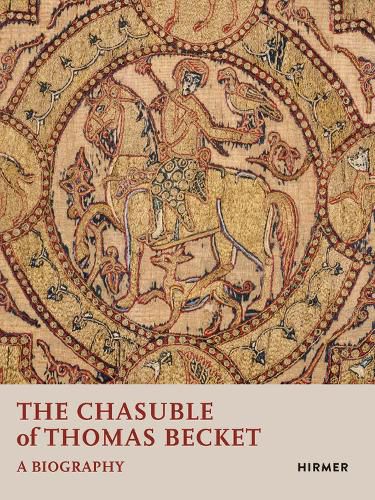Readings Newsletter
Become a Readings Member to make your shopping experience even easier.
Sign in or sign up for free!
You’re not far away from qualifying for FREE standard shipping within Australia
You’ve qualified for FREE standard shipping within Australia
The cart is loading…






The so-called chasuble of Thomas Becket (1118-1170) is one of the most magnificent medieval textiles in the Mediterranean region. Richly decorated with ornaments, fabulous animals and figures in lavish gold embroidery with Arabic inscriptions, this precious liturgical garment provides impressive proof of the reutilisation of the Islamic arts in the Christian world. Venerated as a relic of St Thomas of Canterbury, the chasuble was produced in Spanish-Muslim workshops and probably reached Italy as a donation to the Cathedral of Fermo in about 1200. Despite its outstanding artistic quality and fascinating history, this magnificent garment has never hitherto been the subject of a detailed study. Richly illustrated with numerous details, this volume investigates the meaning of the inscriptions and motifs, examines manufacturing techniques and the function of the chasuble, traces its biography and places it within the historical context of the political, economic and cultural situation in the Mediterranean region.
$9.00 standard shipping within Australia
FREE standard shipping within Australia for orders over $100.00
Express & International shipping calculated at checkout
The so-called chasuble of Thomas Becket (1118-1170) is one of the most magnificent medieval textiles in the Mediterranean region. Richly decorated with ornaments, fabulous animals and figures in lavish gold embroidery with Arabic inscriptions, this precious liturgical garment provides impressive proof of the reutilisation of the Islamic arts in the Christian world. Venerated as a relic of St Thomas of Canterbury, the chasuble was produced in Spanish-Muslim workshops and probably reached Italy as a donation to the Cathedral of Fermo in about 1200. Despite its outstanding artistic quality and fascinating history, this magnificent garment has never hitherto been the subject of a detailed study. Richly illustrated with numerous details, this volume investigates the meaning of the inscriptions and motifs, examines manufacturing techniques and the function of the chasuble, traces its biography and places it within the historical context of the political, economic and cultural situation in the Mediterranean region.